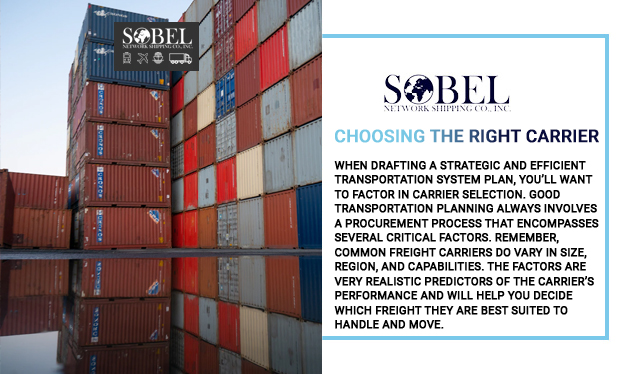When drafting a strategic and efficient transportation system plan, you’ll want to factor in carrier selection. Good transportation planning always involves a procurement process that encompasses several critical factors. Remember, common freight carriers do vary in size, region, and capabilities. The factors are very realistic predictors of the carrier’s performance and will help you decide which freight they are best suited to handle and move.
Good transportation involves planning. You’ll want to partner with the right carrier to ensure safe transportation and mitigate risk. Remember, the low-cost option is often not the best choice.
Picking the right carrier is challenging. Shippers often don’t know what a healthy carrier portfolio looks like. Any imbalances put the shipper at risk. Risk always hurts the partnership.
The manufacturer or retailer has a single goal: effectively deliver the goods to the market. They focus on the time and energy involved in meeting the requirements. In 2020, great disruption occurred which complicated the entire supplier chain and forced transportation changes.
Shipper Variances
Shippers often rely on a price strategy and examine low-cost options. Others might leverage experienced carrier relationships. Many have contingency plans and others operate using a request for quote (RFQ) process.
When vetting carriers, shippers should consider how they allocate freight. They should look at the routing guide to ensure that it is balanced and diverse. Carriers should always have positive performance metrics which need to be factored in any choice. Without a doubt, data will help any supplier evaluate a carrier relationship.
Shippers often have core carriers they work with repeatedly. However, all relationships are complicated, and sticking with the same shipper can carry risks. The needs of shippers are constantly changing, and if a carrier does not evolve sufficiently, the relationship might not be as promising. If the network lacks alignment, then things can falter.
If a shipper’s volume increases, then nondurable shippers start to falter. Existing carriers might not be able to meet the demand. If your carrier starts to have problems, then it’s time to search for a new carrier. Remember, long-term shippers/carriers can be beneficial, but they can also turn sour, requiring continuous evaluations.
Using a Broker
A shipper who uses a broker might experience other inefficiencies. Brokers provide shippers with routing guide depth, immediate solutions, and quality service. However, they can also be a source of problems. A brokerage often becomes a crutch. If a contract freight proves unreliable and things start going south, then it’s time to reevaluate the use of a broker. Often the best bet for a shipper is to break away from a broker and contract with an asset-based carrier.
National and Regional Networks
Yes, you can pick the big national shippers, but sometimes the best choice is a small or medium-sized regional carrier. They are often more effective and do not have additional costs.
Choosing a Carrier Checklist
Below is a brief checklist of things you should consider when hiring a shipper or making a choice about whether to stay with your current shipper.
- Ability to trace and report accurately
- Communication with the traffic department
- High-density cargo
- Lightweight cargo
- Carrier-owned and operated
- Carrier ran by broker or independent agents
- Support people location
- Consignee location
- Insurance levels
- Number of shipments handled
- Number of personal
- Terminal owned or leased
- Experience
- Emergency response
- References
- Workforce experience level
- Trucking firms’ truck to trailer count
- Driver turnover rate
- Physical facilities
- Time devoted to each shipper


